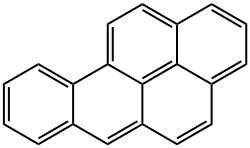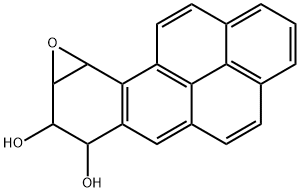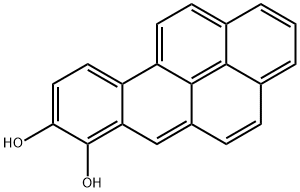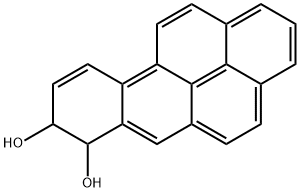3,4-Benzopyrene solution , analyticalstandard,5.0ug/mLinmethanol , 50-32-8
Synonym(s):
3,4-Benzopyrene;3,4-Benzpyrene;Benzo[def]chrysene
CAS NO.:50-32-8
Empirical Formula: C20H12
Molecular Weight: 252.31
MDL number: MFCD00003602
EINECS: 200-028-5
| Pack Size | Price | Stock | Quantity |
| 2ML | RMB359.20 | In Stock |
|
| others | Enquire |
PRODUCT Properties
| Melting point: | 177-180°C |
| Boiling point: | 495°C |
| Density | 1.1549 (estimate) |
| vapor pressure | 2.4 at 25 °C (McVeety and Hites, 1988) |
| refractive index | 1.8530 (estimate) |
| Flash point: | 495°C |
| storage temp. | 2-8°C |
| solubility | Soluble in benzene, toluene, and xylene; sparingly soluble in ethanol and methanol (Windholz et
al., 1983) |
| form | Crystalline |
| pka | >15 (Christensen et al., 1975) |
| color | Pale yellow/green/orange |
| Water Solubility | Soluble in benzene, toluene, and xylene. Sparingly soluble in alcohol, methanol. Insoluble in water |
| Merck | 14,1103 |
| BRN | 1911333 |
| Henry's Law Constant | 7.35 at 25 °C (thermodynamic method-GC/UV spectrophotometry, Altschuh et al., 1999)(x 10-10 mmHg at 25 °C): |
| Exposure limits | OSHA: TWA 0.2 mg/m3 |
| Stability: | Stable. Incompatible with strong oxidizing agents. |
| InChIKey | FMMWHPNWAFZXNH-UHFFFAOYSA-N |
| CAS DataBase Reference | 50-32-8(CAS DataBase Reference) |
| IARC | 1 (Vol. Sup 7, 92, 100F) 2012 |
| EPA Substance Registry System | Benzo[a]pyrene (50-32-8) |
Description and Uses
Benzo(a)pyrene (BaP) is bioactivated to its carcinogenic form
by phase 1 and phase 2 metabolism. As with other polycyclic
aromatic hydrocarbons (PAHs), the presence of the ‘bay
region’ contributes greatly to the carcinogenicity of BaP. This
region is sterically constrained, allowing the formation of
diol epoxides, which subsequently react with intracellular
molecules such as DNA. Human exposure to BaP and other
PAHs occurs primarily from smoking or from secondhand
smoke, air polluted with combustion products, or food and
water polluted with combustion products, such as those
cooked over charcoal or broiled.
BaP has been extensively studied for its toxicities in children
and during pregnancy. A study of pregnant active smokers
showed that BaP crossed the human placenta and was bound
to fetal hemoglobin at levels significantly higher than in pregnant
nonsmokers.
Extensively used in cancer research and for GC (Gas Chromatography) and LC (Liquid Chromatography) Analysis. It is also a multipurpose intermediate.
Safety
| Symbol(GHS) |    GHS07,GHS08,GHS09 |
| Signal word | Danger |
| Hazard statements | H317-H340-H350-H360FD-H410 |
| Precautionary statements | P202-P261-P273-P280-P302+P352-P308+P313 |
| Hazard Codes | T,N,F |
| Risk Statements | 45-46-50/53-60-61-43-67-66-36-11-65-38-52/53-36/37/38 |
| Safety Statements | 45-53-61-60-26-62-16 |
| RIDADR | 2811 |
| WGK Germany | 3 |
| RTECS | DJ3675000 |
| TSCA | Yes |
| HazardClass | 6.1 |
| PackingGroup | III |
| HS Code | 29029090 |
| Hazardous Substances Data | 50-32-8(Hazardous Substances Data) |
| Toxicity | LD50 for mice (intraperitoneal) 232 mg/kg (Salamone, 1981). |


![Benzo[a]pyrene-d12](https://img.chemicalbook.com/CAS/GIF/63466-71-7.gif)


